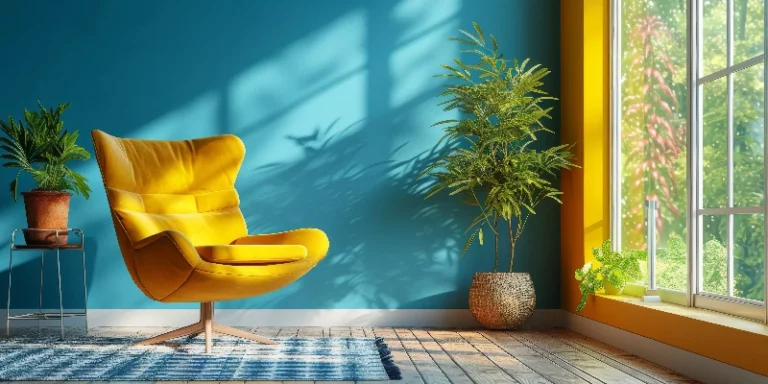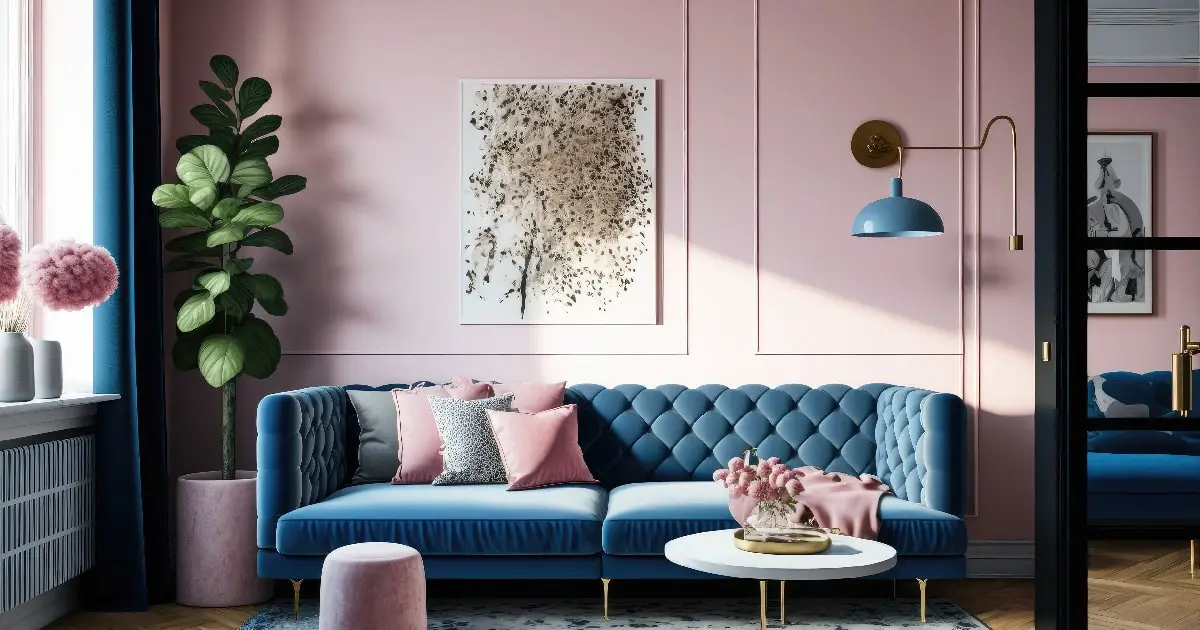Spring whispers the promise of new beginnings, a time for casting off the winter blues and embracing the fresh energy of the season. But how can you bring that feeling of renewal indoors? The answer lies in the transformative power of color. The colors you choose for your home environment have a profound impact on the way you feel and experience your space. A well-chosen color palette can create a sense of calm and relaxation, invigorate your mood, or even boost your creativity.
For example, soft pastels like baby pink, lavender, and mint green evoke feelings of tranquility, perfect for creating a relaxing sanctuary in your bedroom or bathroom. On the other hand, bright and bold colors like sunshine yellow, fuchsia, and electric blue energize and stimulate, ideal for a workspace or a room where you want to feel invigorated.
This year, two distinct color trends are blossoming, offering a range of options to suit your style, whether you crave a calming retreat or a vibrant burst of energy. So, let’s delve into the top spring color trends for 2025 and explore how you can use them to transform your home into a sanctuary that reflects the joy and renewal of the season.
1. Soft Pastels: A Breath of Fresh Air

Imagine a gentle breeze carrying the delicate scent of blossoming flowers through open windows. This is the feeling soft pastels evoke. These calming colors, like baby pink, lavender, mint green, and a touch of sky blue, are reminiscent of spring’s first blooms. They create a serene atmosphere in any room, perfect for fostering relaxation and unwinding after a long day. Here are some specific trendy shades to consider:
Pale Pink: This delicate shade evokes feelings of peace and romance.
Lavender: A calming and soothing hue, perfect for promoting relaxation.
Mint Green: Fresh and airy, mint green brings a hint of nature indoors.
Glacial Blue: This soft, icy blue adds a touch of serenity and sophistication.
Now, let’s explore how you can incorporate them into your home:
Bringing the Tranquility of Spring Indoors:
- Living Room: Paint your walls in a soft pastel shade like pale lavender or calming mint green. Add pops of color with throw pillows in contrasting pastel hues, or incorporate artwork that features vibrant spring florals. Opt for light furniture in white or natural wood tones to further enhance the airy feel.
- Bedroom: Create a tranquil retreat that lulls you to sleep each night. Soft pastel walls in a calming sky blue or a delicate baby pink set the perfect stage for light, airy bedding in white or cream. Layer in sheer curtains that flutter gently in the breeze, adding a touch of romance and enhancing the feeling of serenity.
- Bathroom: Soft pastels are a natural choice for creating a spa-like feel for ultimate relaxation. Use them on walls or towels in calming shades like lavender or sage green. Pair these soft hues with chrome or nickel fixtures for a touch of elegance, creating a space that feels both sophisticated and serene.
2. Embrace the Energy of Bright and Bold Colors

Spring is not just about peaceful renewal; it’s also a burst of vibrant energy. If you’re looking for a color palette that reflects this invigorating energy, a bright and bold palette is perfect for you. This trend celebrates the season’s liveliness with colors that are anything but shy, like sunshine yellow, fuchsia, or electric blue. These bold hues are ideal for adding a touch of personality and a burst of cheer to any space.
Here are some trending, bright and bold colors to consider:
Apricot Crush: This playful and energetic shade adds a touch of sunshine to any space.
Orangeade: Similar to apricot crush, but with a touch more zing, orangeade is a cheerful and optimistic color.
Butter Yellow: Light and cheerful, butter yellow evokes feelings of warmth and happiness.
Fuchsia: This vibrant pink adds a burst of energy and personality to any room.
Stark White: While not necessarily bold, stark white provides a clean and bright foundation for a space decorated with pops of bolder colors.
Now, let’s delve into how you can use them to refresh your home:
Making Bold Statements:
- Dining Room: Liven up mealtimes and create a space that sparks conversation with a bold accent wall in a bright color like sunshine yellow or a playful fuchsia. Balance the vibrancy with white furniture and natural textures like woven placemats and jute rugs for a cohesive look.
- Home Office: Spark creativity and boost productivity with a bold feature wall in a color that inspires you, perhaps a stimulating shade of electric blue or a citrusy yellow. Don’t be afraid to add pops of color in your office accessories, like a bright lamp or a colorful file organizer. A stimulating and inspiring workspace can significantly impact your focus and motivation throughout the day.
- Entryway: Make a grand first impression with a brightly colored door that sets the tone for the rest of your home. A vibrant coral or a cheerful turquoise can add a touch of personality and instantly brighten your guests’ day. Alternatively, consider a statement rug in a bold geometric pattern to create a welcoming and visually interesting entryway.
The Takeaway: Unleash Your Inner Designer
These are just starting points to inspire your creativity. Don’t be afraid to mix and match colors from both palettes or add neutrals like white, gray, or beige for a more balanced look. Consider the natural light in your space as well. Soft pastels work well in rooms with less light, while brighter colors can be used to balance out an abundance of natural light.
So this spring, embrace these spring color trends for 2025 and transform your home into a vibrant and stylish haven that reflects your unique personality. Let your home be a reflection of the joy and renewal that spring brings.
Are you on the hunt for your own home where you can let your inner design blossom? Explore MSR Communities’ new construction homes for sale and new construction townhomes for sale and select your perfect canvas to decorate with this fresh spring color palette.

